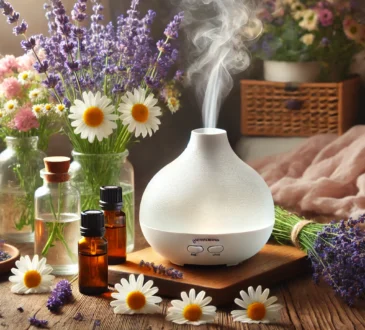
Hijama, also known as cupping therapy, is a traditional practice that involves placing cups on the skin to create suction. This therapy has been used for centuries in different cultures for its potential health benefits. Although scientific evidence supporting some claims is limited, many people have found hijama to be beneficial for their overall well-being. Here are some potential benefits of hijama therapy and information on how and when to use it:
Potential Benefits of Hijama Therapy:
- Pain Relief: Hijama may help relieve chronic pain in areas such as the back, shoulders, and neck.
- Improved Blood Circulation: The suction effect can stimulate blood flow to the targeted area, improving circulation.
- Detoxification: Some believe hijama helps remove toxins from the body by drawing out impure blood.
- Relaxation: The therapy can promote relaxation and help relieve stress and tension.
- Muscle Recovery: Hijama may aid in muscle recovery and alleviate muscle stiffness.
- Respiratory Issues: It may help alleviate symptoms of conditions such as asthma and bronchitis.
- Digestive Health: Some people use hijama to address digestive issues such as bloating and indigestion.
- Immune System Boost: It may stimulate the immune system, potentially aiding in overall health.
- Skin Health: Hijama may improve skin conditions such as acne and eczema.
- Joint Pain Relief: It can help alleviate joint pain and stiffness.
- Headache Relief: Some people use hijama to relieve tension headaches and migraines.
- Increased Energy: Hijama may boost energy levels and overall vitality.
- Mental Clarity: Some believe it can improve focus and concentration.
- Sleep Improvement: It may promote better sleep patterns.
- Reduction of Inflammation: Hijama may help reduce inflammation in certain areas of the body.
- Fertility Support: Some believe hijama can improve fertility and reproductive health.
- Detoxification: Hijama may help remove impurities and toxins from the body.
- Lymphatic Drainage: It can promote lymphatic drainage, which may improve immune function.
- Weight Loss: Hijama may support weight loss efforts by promoting metabolism.
- Boosting Overall Well-being: It can enhance overall well-being and quality of life.
- Better Skin Texture: Some find that hijama improves skin tone and texture.
- Reduction of Cellulite: Hijama may help reduce the appearance of cellulite.
- Improved Hair Growth: Some believe it can stimulate hair follicles and improve hair growth.
- Relief from Varicose Veins: Hijama may help alleviate symptoms of varicose veins.
- Menstrual Pain Relief: It can help relieve menstrual pain and discomfort.
- Nerve Pain Relief: Hijama may help alleviate nerve pain and related symptoms.
- Reduction of Arthritis Symptoms: It can help relieve symptoms of arthritis.
- Improved Digestion: Some people experience better digestion after hijama therapy.
- Alleviation of Allergies: Hijama may help reduce allergy symptoms.
- Quicker Injury Recovery: It may support faster recovery from injuries.
- Hormonal Balance: Hijama may help balance hormones in the body.
- Improved Blood Flow: It may enhance blood flow to specific areas of the body.
- Reduced Tension and Anxiety: Hijama may help reduce tension and anxiety.
- Prevention of Illness: Regular hijama may help prevent illness by boosting the immune system.
- Reduction of Colds and Flu: It may reduce the frequency and severity of colds and flu.
- Support for Chronic Conditions: Hijama may support the management of chronic health conditions.
- Support for Autoimmune Conditions: Some use hijama to support autoimmune conditions.
- Relief from Carpal Tunnel Syndrome: It may help alleviate symptoms of carpal tunnel syndrome.
- Improved Circulatory System: Hijama may improve the function of the circulatory system.
- Mental and Emotional Balance: It can promote a sense of mental and emotional balance.
- Prevention of Sports Injuries: Hijama may help prevent sports injuries and support athletic performance.
- Alleviation of Fibromyalgia Symptoms: It may help relieve symptoms of fibromyalgia.
- Improved Kidney Function: Some believe it can support kidney function.
- Improved Lung Function: Hijama may support lung function and respiratory health.
- Reduced Back Pain: It may alleviate back pain and related discomfort.
- Improved Joint Mobility: Hijama may improve joint mobility and range of motion.
- Relief from Sciatica: It may help alleviate symptoms of sciatica.
- Reduction of High Blood Pressure: Hijama may help lower high blood pressure.
- Improved Insulin Sensitivity: It may support better insulin sensitivity and glucose control.
- Reduced Tinnitus Symptoms: Some find relief from tinnitus symptoms with hijama.
- Improved Liver Function: Hijama may support liver function and detoxification.
- Relief from Plantar Fasciitis: It may help alleviate symptoms of plantar fasciitis.
- Improved Vision: Some believe hijama can support eye health and improve vision.
- Improved Hormonal Health: Hijama may support hormonal health, especially in women.
- Improved Fertility: It may support fertility and reproductive health.
- Reduction of Stretch Marks: Hijama may help reduce the appearance of stretch marks.
- Relief from Migraines: It may help alleviate migraine symptoms.
- Relief from Chronic Fatigue Syndrome: Hijama may help manage chronic fatigue.
- Improved Balance: Hijama may improve overall physical balance and stability.
- Improved Spleen Function: Some believe hijama can support spleen function.
- Improved Gallbladder Function: Hijama may support gallbladder health.
- Improved Adrenal Health: Hijama may support adrenal health and function.
- Improved Thyroid Function: Hijama may support thyroid health.
- Improved Memory and Cognition: It may support cognitive function and memory.
- Reduced Symptoms of IBS: Hijama may help alleviate symptoms of irritable bowel syndrome (IBS).
- Support for Rheumatoid Arthritis: Hijama may help manage symptoms of rheumatoid arthritis.
- Improved Menopausal Symptoms: It may help manage symptoms of menopause.
- Relief from Chronic Sinusitis: Hijama may help alleviate symptoms of chronic sinusitis.
- Improved Nutrient Absorption: Hijama may support better nutrient absorption.
- Relief from TMJ Disorders: Hijama may help manage symptoms of temporomandibular joint (TMJ) disorders.
- Improved Mobility for the Elderly: It may improve mobility and quality of life for older adults.
- Reduction of Breast Engorgement: Hijama may help alleviate breast engorgement in nursing mothers.
- Improved Circulation to Extremities: Hijama may improve circulation to the hands and feet.
- Support for Parkinson’s Disease: Hijama may help manage symptoms of Parkinson’s disease.
- Improved Joint Flexibility: It may improve joint flexibility and range of motion.
- Improved Emotional Health: Hijama may support emotional and psychological well-being.
- Relief from Post-Surgery Pain: Hijama may help alleviate post-surgery pain.
- Improved Hearing: Hijama may support ear health and improve hearing.
- Relief from Nerve Damage: It may help manage symptoms of nerve damage.
- Improved Athletic Performance: Hijama may support athletic performance and recovery.
- Reduced Anxiety and Depression: Hijama may help manage symptoms of anxiety and depression.
- Improved Skin Elasticity: Hijama may improve skin elasticity and firmness.
- Relief from Autoimmune Disorders: It may help manage symptoms of autoimmune disorders.
- Improved Muscle Tone: Hijama may improve muscle tone and strength.
- Relief from Restless Leg Syndrome: Hijama may help alleviate symptoms of restless leg syndrome.
- Improved Lymphatic Drainage: Hijama may support lymphatic drainage and immune function.
- Support for Cancer Treatment: Hijama may complement conventional cancer treatments.
- Improved Posture: Hijama may help improve posture and alignment.
- Improved Self-Care: Hijama may encourage mindfulness and self-care practices.
- Support for Alzheimer’s Disease: Hijama may help manage symptoms of Alzheimer’s disease.



How and When to Use Hijama
- Consult a Professional: Seek treatment from a trained and experienced hijama practitioner to ensure proper technique and safety.
- Preparation: Ensure the practitioner uses clean and sterilized equipment.
- Treatment Areas: Hijama can be performed on various parts of the body, depending on the condition being treated.
- Timing: Discuss with your practitioner the appropriate timing and frequency of hijama sessions for your specific health needs.
- Aftercare: Follow any aftercare instructions provided by the practitioner, including keeping the treated area clean and avoiding strenuous activities.
- Health Conditions: Discuss your health history with the practitioner to determine if hijama is appropriate for you.
Hijama therapy may offer numerous potential health benefits, but it is important to use it with caution and under the guidance of a qualified professional. Always consult with a healthcare provider before starting any new therapy, especially if you have existing health conditions.




